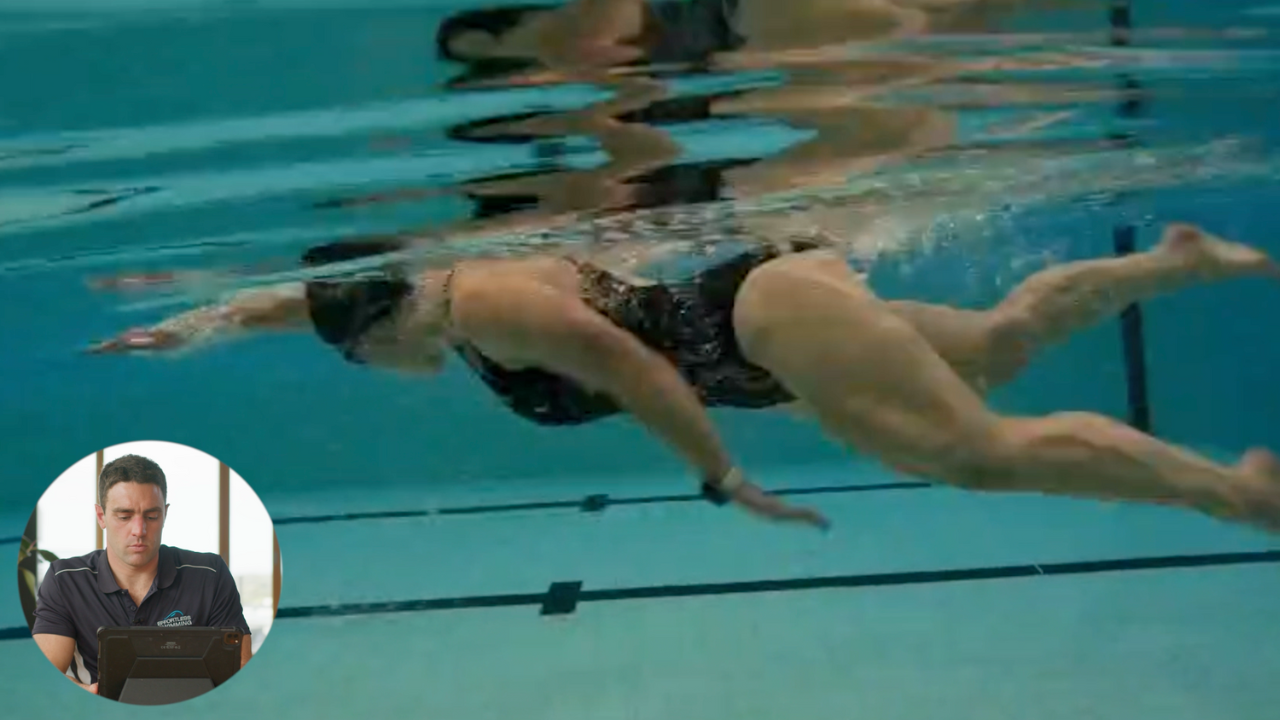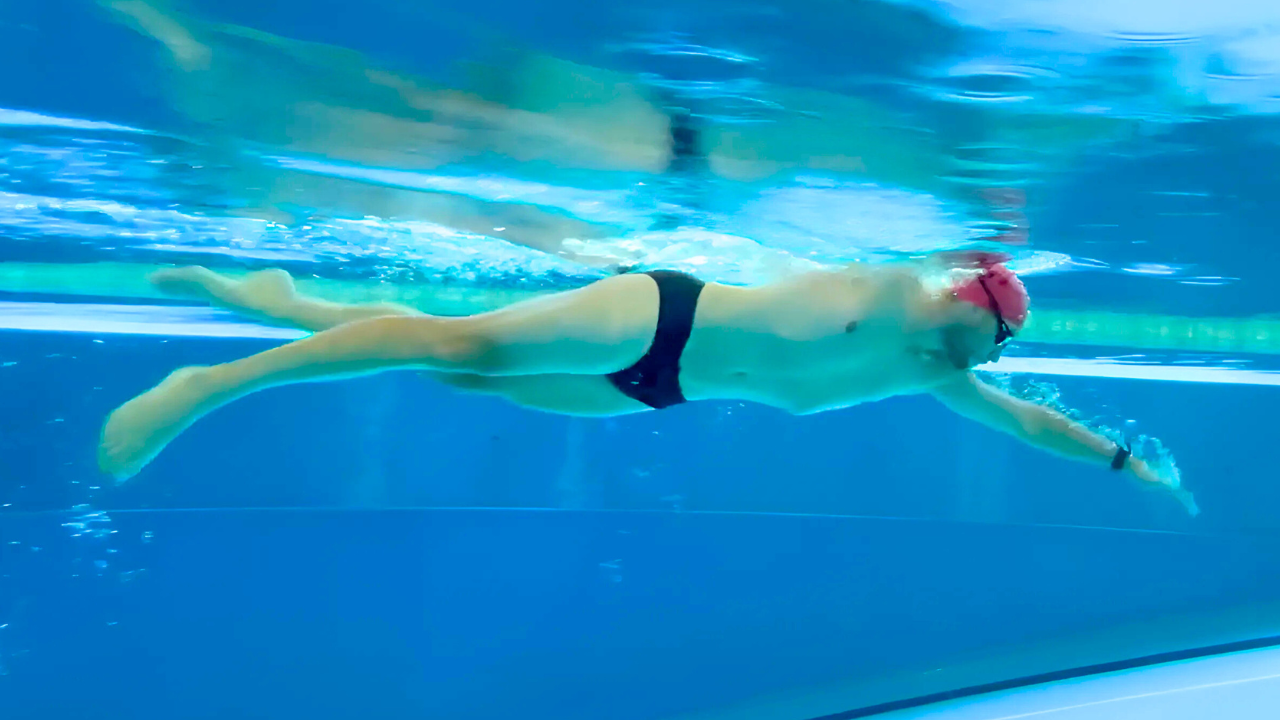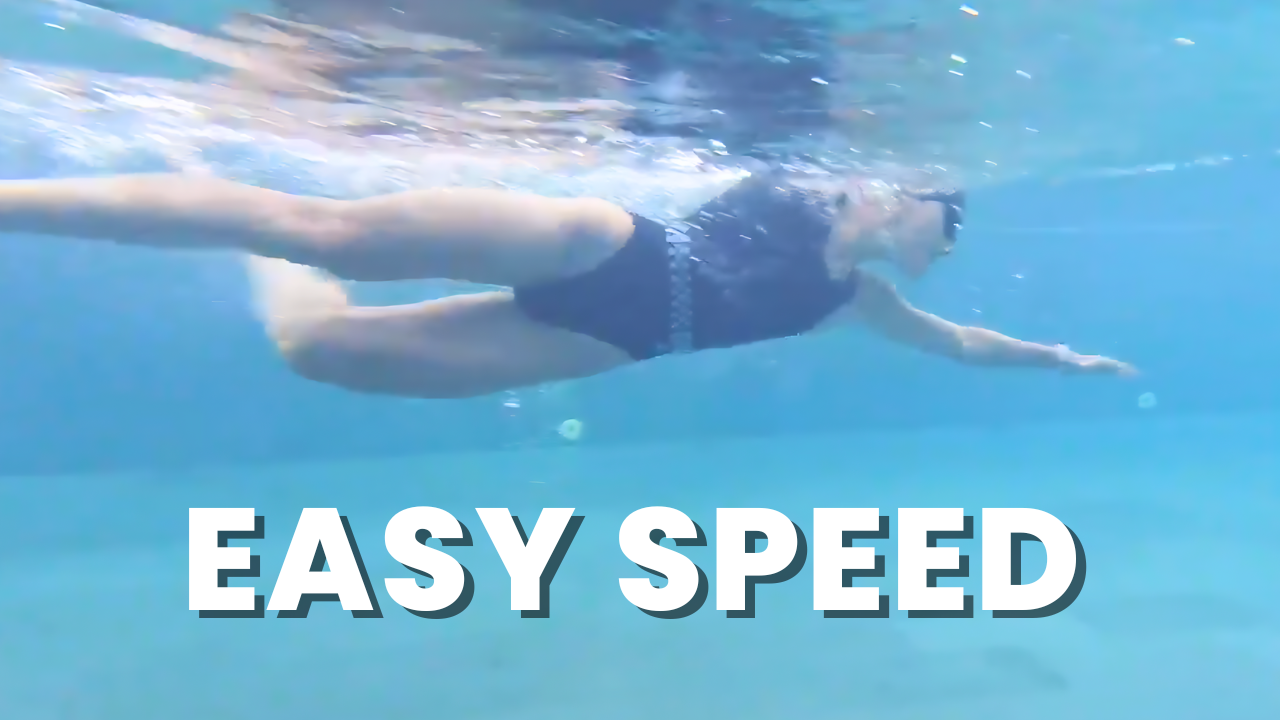If you’re swimming with a swim tether or bungee cord, these 7 tips will help you get more out of your workout.
Transcription:
So you’ve bought yourself a swim tether. Here are seven tips. They’re going to help you have a lot more fun in your workouts, avoid getting injured, and also just mix it up in a way that will keep you going for the next couple weeks and potentially a couple of months as well. Make sure you stick around for number seven. This is probably my favorite one. It doesn’t really use a tether, but it is a way that I’ve been mixing up the workouts and I’m having a lot of fun doing this thing that I’m going to recommend to you in number seven.
The first thing is, place it up high. If your tether is attached too low, you’ll probably find that your hips and your legs are sinking, making it hard to use the tether. So number one, place it up somewhere high, maybe on top of a fence post or something higher to allow you to keep your legs and hips up. It makes you use a tether a whole lot easier.
Number two is you can mix it up. You don’t need to swim continuously doing freestyle for 15, 20 minutes on the tether. What I like to do is mix it up using different strokes. So I usually do some breaststroke, I’ll do front scull as you can see here and also doing some kick against the wall or against the tether. And I want to thank Elise Butler for providing these videos and providing some of these tips as well.
What you might do on this tether is you could do say a minute of freestyle then you might mix it up with some sculling in between. Another minute of freestyle and then mix it up with some breaststroke. So doing it that way is going to take a lot of the pressure and the load off the shoulders because as you know attached to the tether, it is hard work and it is not like swimming normally because of the amount of pressure that you’ve got. So if you are trying to do a normal session that might be an hour, an hour and a half long, it’s going to be too much time spent swimming with that sort of resistance. And you’ll likely find in the next two or three weeks that could lead to injury. So it is not like a normal workout in that way.
The third thing is using a snorkel. If you’ve got a small pool or you’re finding that your pool is getting quite choppy and it is hard to breathe, then wearing a snorkel can be a really good way to not only just take the need to turn your head out of it so it’s easier to breathe, but also just focusing on your stroke and you know you’ve mentioned this in a lot of other videos as well. Talking about when you want to focus on your catch in your pool, wearing a snorkel is a great way to do that because when you don’t need to turn your head to the side, it makes it much easier to focus on those things.
The fourth thing is there are two ways for you to measure your workout. The first one is obviously time. Now if you’re going by time, let’s say you want to do a minute of freestyle, 30 seconds of breaststroke and keep repeating that. You can get a small clock from in Australia somewhere as Kmart and Elise gave us this tip. Is you can get a small clock, put it by the side of the pool and you can use that like a 60-second timer that you’d normally have at a pool.
The other way that you can do it is by strokes. You can count your strokes, whether that be 50, 100 strokes and then you alternate to something else. So you can use time or stroke count as a way to go about measuring your workouts.
The fifth thing is to make sure that you are breaking down your workouts into shorter reps and shorter sessions. As we mentioned earlier, you don’t want to be doing an hour and a half on the swim tether. It’s going to be too much. You might be doing sessions of 30 to 45 minutes. That is going to be more than enough on the swim tether. Now, what I normally do when I’m doing this is write down a session beforehand, file that session just like you normally would if you’re going into the pool rather than just making it up on the spot. And I’m going to put a session below that Elise has sent through that she’s been doing. So this is a good way to be able to have some structure to your workouts and just make sure that you follow the plan and it makes it a lot more interesting as well.
Number six is to make sure you are changing your effort somewhere in your workout. So we did a presentation, I did an online training for people inside our membership where we were talking about a way to structure these workouts is similar to what you would in the pool where you will do something at say, six out of 10 effort and then you do something at an eight out of 10 and then maybe an all-out effort. What that could look like is like 30 seconds at 60% effort. That’s a perceived effort. 20 seconds at 80% effort and the last 10 seconds at all out, 10 out of 10 effort. That’s a way that you can… Again, just make sure that you’re varying the pace, it breaks it up and makes it a lot more interesting, but you’ll also probably get some better gains out of it. Now, what I’d recommend with this is don’t do too much at that very top-end effort because of the amount of resistance, you will probably find that you’re feeling pretty sore. It’s not great for your shoulders if you’re doing too much at that very top end.
Now number seven, this is probably my favorite one. It doesn’t really involve a swim tether, but it’s a way that I’ve been having a lot of fun working out in the pool. And if you don’t follow us on Instagram, you should go and check us out there. In some of our stories, I’ve shared some of these things that I’ve come across.
Now, number seven is doing some underwater based training. Now there are two companies that I follow. One is XPT that’s run by surfer Laird Hamilton and his wife Gabby Reece, and also Deep End Fitness. They’re based out of California. They post some really good workouts and exercises that you can do in the pool. Now disclaimer here, it makes sure that you’re doing it with someone else because some of them do involve some breath holds, make sure you’re doing it safely. And with these types of exercises which I’m going to show you here, this is a great way to not only develop strength but also develop your lung capacity and it’s also a lot of fun and it is a really good workout. I did about half an hour to 40 minutes of some of these types of exercises the other day and an hour later, I was completely stuffed, but in a good way. It’s been a lot of fun doing these different types of exercises.
You can check those guys out. I’ll put the links to their Instagram below and they’ve got some really good ideas with ways that you can mix up your training. Most of them do involve some weights, so it is good to either have some kettlebells or dumbbells to be able to do these exercises with, but you might find some objects around the house that you could use as well instead of weights if you don’t have them.
So there are seven ways that you can use a swim tether a lot more effectively. Let me know in the comments below if there are any other tips that you’ve got or things that you’ve found over the last couple of weeks of training with the swim tether. I hope this helps. Make sure you subscribe below, like the video, and I’ll see you next week with another video. I might start posting a few more workout videos, land-based workout videos on our Instagram, so make sure you go and follow us there.










